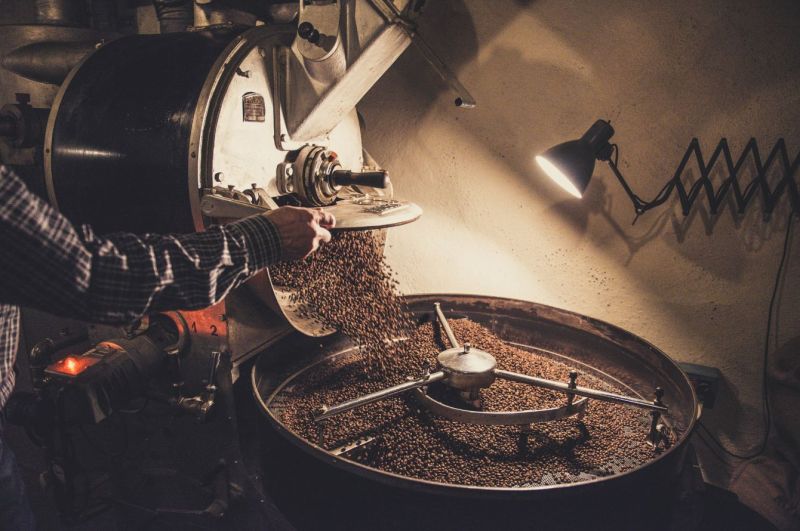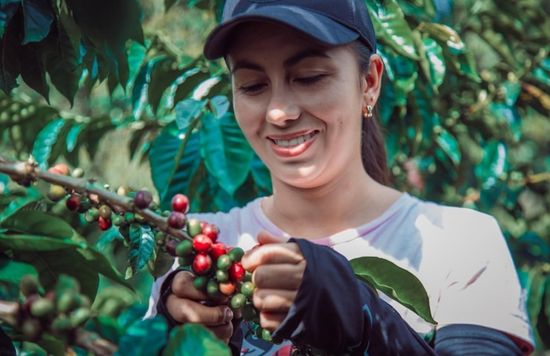Educating Sommeliers Worldwide.
By Beverage Trade Network

When I first visited Boquete in Panama’s Chiriquí Province in 1997, this Central American country’s coffee was barely known outside its borders, whereas neighboring Costa Rica already counted among the world’s best-known quality producers. A friend who had lived in Panama for many years told me of Boquete’s beauty, altitude, cool climate, and wonderful café, so I made the trip. I have gone back several times recently, including for coffee training, and everything has changed. Panamanians drink a lot of coffee, five kilograms a year on average, and have grown the crop for centuries, but before the 21st century, its elegance and excellence were mostly a secret.
Now, Panama’s Geisha coffee is the most expensive and acclaimed in the world. As expert Asser Christensen notes, “Geisha is way more expensive than any other kind of coffee, and it has won way more prizes. In 2021 the most expensive coffee in the world was a naturally processed Geisha from Panama that was sold for more than $2500 per pound.”
European settlers introduced this grain at the beginning of the 19th century, during the time of Spanish colonization. From that moment, it has been part of the tradition of most Panamanians.
As beverage advisors, sommeliers must know about coffee and being able to converse about the hottest ticket, Panama coffee, is important. Judging a guest’s taste in coffee can also sell more wine, of course.
According to data from the Ministry of Agricultural Development, Panama has about 17,548 hectares of coffee farmed by some 8,287 producers, with the province of Chiriquí being the largest producer with 6,434.99 hectares, cultivated by 1,154 producers, followed by Coclé with 4,715 hectares (2,210 producers), West Panama with 2,300 hectares (1,000 producers), and Colón with 1,801 hectares (1,601 producers).
It's Chiriquí that is truly the focus for quality Arabica production, with many of the others having lower altitudes and growing Robusta. Chiriquí has mountains, winds, and mist, lots of high-altitude coffee-growing locations, microclimates, and rich volcanic soil. High-altitude coffee—or café de Altura—is a critical marker of quality. Numerous entrepreneurs have started coffee farms in Chiriquí over the past 20-30 years, including bringing in new cultivation techniques, employing sustainable and organic practices, and generally improving overall quality to world-class levels.
In the last five years, there has been an increase in production of 12% and yields per hectare of 4.5%, with an increase in the last five years of 20%. Although large producers represent approximately 10%, most coffee growers are small- and medium-sized businesses. The larger and more advanced producers have paved the way for excellence with varieties like Geisha and Pacamar. Estate, single-origin, and single-variety coffees have allowed the opening of export markets and reaching the quality needed to claim the highest prices for coffees in the world.
The Geisha is a variety of coffee of the arabica species and is the most recognized worldwide. Its boom began in 2004 when it entered the Best of Panama contest and ranked first in various categories. Currently, it continues to be one of the most used by baristas in tasting competitions for the best coffees in the world.
In general, Panamanian coffee is characterized by having a sweet flavor with many citrus notes of lemon, orange, or bergamot, even cut grass, along with hints of dark cocoa. It’s subtle stuff. However, each variety will present different flavors. There is not a single roast that is preferred in the country. Beans that are lightly roasted produce coffee very similar to teas. They are characterized by having a mild flavor with citrus notes of lemon and a sweet taste.
Conversely, a medium or medium-high roast has more caffeine than a light roast, has a more intense flavor, and can have a slightly bitter aftertaste on the palate. Europeans are more akin to this roast, while Asians prefer coffees similar to lightly roasted teas.

Image: Harvesting Coffee on the farm; Source: Freepik
The climatic conditions found in Panama greatly favor the cultivation of the best coffees in the world. As there are many mountainous areas, the winds and mists that form in this place make the fruit ripen more slowly. This, although it translates into lower productivity, also produces sweeter coffee and more developed flavors. The mountains are similar to those in Costa Rica, but more concentrated geographically.
Harvesting coffee beans is not an easy task. The terrain can be steep and slippery; terracing the land to avoid erosion is a best practice. On foot, quality coffee growers will choose one by one the fruits that are at their best ripening point during the period from September to December.
Most of the coffee in Panama is washed. An important thing in the washing process is that coffee farmers try to use water from the many natural springs found in the mountains so as not to interfere with the flavor of the coffee. This is not common in countries with higher production.
In Panama, besides the important Boquete area itself, there are two lesser-known areas that are dedicated to the cultivation of coffee. These regions are between 1,000 and 3,000 meters above sea level to offer coffees with different profiles and sensations. However, all three are located within the province of Chiriquí, Panama’s coffee capital. The harvest begins in December and ends in March.

Image: Coffee Beans Roasted; Source: Unsplash
Location West of Panama and located north of the province of Chiriquí.
Altitude Between 1,000 and 2,800 meters above sea level.
Temperature Between 13 to 24 °C.
This is the oldest producing region to grow coffee in Panama. Most of the coffee farms in this area are located at 1,600 meters above sea level. Being so close to the inactive Barú Volcano, it also has volcanic soil rich in nutrients that are essential for the growth of the coffee tree.
The climate in this area is somewhat dry. However, constant mists are formed, which are also called bajareque, so that the coffee beans mature more slowly. This means that coffees with medium-high acidity and a medium-low body are grown.
[[relatedPurchasesItems-41]]
Location: Western Chiriquí.
Altitude 3,475 meters above sea level. It is the highest elevation in Panama.
Temperature Between 13 to 24 °C with an average temperature of 19 °C.
This area is very privileged due to its nutrient-rich volcanic soil. In addition, being a mountainous area together with the characteristic climate of Panama, it is the ideal place for growing coffee. Although it is the highest point in the country, most farms in this area are located between 1,200 and 1,500 meters above sea level.
Coffee with greater acidity and body is grown in this area compared to coffee from Boquete. It is characterized by being very aromatic and used for blends in espressos. The main variety grown in this area is Catuaí.
This region also produces a large percentage of coffee in the entire country. Together with the Boquete area, they lead research to improve the productivity and quality of Panamanian coffee.
The coffee from this area has a low acidity with a lot of aromas. In addition, it has many floral-tasting notes. The coffee from this area is even similar to some Dominican or Jamaican coffees.
Understanding the varieties of coffee will allow you to understand more about their differences and choose the one that best suits your and your guests’ tastes. In addition, understanding how this variety behaves at an altitude and with specific climatic conditions will open your eyes to coffee cultivation in Panama. The similarities with wine production are obvious.
You should already know the general differences between Arabica and Robusta coffee. The Arabica species has always been synonymous with higher quality worldwide. Arabica coffee does not have just one flavor. Each variety, each region and each farm will present different tasting notes and different levels of acidity (i.e. terroir). Within this species, you can find very sweet and mild coffees, while there are others that are much stronger and spicier.
Here are Panama’s main Arabica varieties and their most important characteristics:
This is the variety of the arabica species most recognized worldwide as saying “Panama.” Its rise is recent. It began in 2004 when it entered the Best Of Panama contest and placed first in various categories. Currently, it continues to be one of the most used by baristas in tasting competitions for the best coffees in the world.
The flavor of this coffee is surprising, it is very aromatic and floral. I was surprised by its subtlety of well-defined flavors and aromas on first trying it during a “cupping” class in Boquete. Owing to its method of cultivation, it is a sweet coffee with fruity notes that can include papaya, peach, pear, pineapple, and orange. In addition, its aroma is of jasmine, peach, and orchids. On the finish, you will find citrus notes of bergamot.
Another outstanding feature of this coffee is that it is not acidic or bitter. It resembles the flavor of many teas which, along with its aroma, makes it highly desirable, especially in Asian markets. This variety, although it is native to Ethiopia, is far better known and representative in Panama. In addition, other Latin countries such as Costa Rica and Colombia are starting crops of this variety, following Panama’s success with it.
Typica
This variety has been the basis for developing many other varieties of coffee. It is the oldest variety in Panama, and it means “typical.”
This plant is tall, which makes it lower yielding. However, it translates to high quality in the cup. The fruits of this variety are elongated and oval. The acidity of this coffee depends largely on the altitude at which it is grown. If it is grown in very high areas, the acidity will be higher. Additionally, it has a citrus and floral flavor with a somewhat sweet aftertaste.
This variety is the result of a mutation of the Bourbon variety, another well-known variety in Panama and Costa Rica. It is a high-yielding plant because it is not as tall as other varieties and is much bushier. There is less distance between each branch is less, so Caturra has more primary and secondary branches than Bourbon or Typica. This helps it thrive in windy and misty conditions.
The coffee of this variety is characterized by having a lower acidity with citrus notes, particularly lemon.
Another very common variety in Panama and around the world. Catuai is the result of crossing the Mundo Novo and Caturra varieties. This variety is amazing for all the "genealogy" it brings into action. First, Mundo Novo is already the result of a Typica mutation and, Caturra is the result of the Bourbon mutation. Therefore, Catuaí has characteristics of many varieties.
The plant is characterized by being rather small in size with long side branches that make it look like an umbrella. This plant is perfect for climates with a lot of rain and wind because its fruits do not fall so easily. It is a high-yielding plant and its profile is very similar to the other Arabicas, but still high quality. It has a medium acidity with citrus tones.
Mundo Novo is the result of crossing Typica and Bourbon. The best place to grow it is in high areas because it is more productive. In addition, it is also very resistant to the diseases that most attack coffee.
This variety, unlike most Panamanian varieties, is not sweet and has a slightly bitter taste.
This variety is the result of crossing the Pacas and Maragogipe varieties. They are not as well-known and were created in 1958 by the Salvadoran Institute for Coffee Research (ISIC). This variety is not traditional in Panama, but it’s gaining attention.
The fruit of Pacamara coffee is characterized by being very large compared to other varieties. The coffee produced has notable differences from other traditional Panama strains. Its body is dense and thick, it has taste notes of spices and chocolate with citrus notes. These different flavors balance well, with a sweet touch. On the finish, there is a sensation of cream flavored with chocolate and spices.
This variety is very similar to Typica, coming from colonial times. The bushes are very similar in height and shape, only Bourbon has more branches and foliage, which means that it is more productive, around 30% more. This variety, however, is not very productive if grown at the wrong altitude. But, between 1,200 and 2,000 meters above sea level is when the most cherries are produced.
The different but distinctive flavors experienced from each of the Panamanian coffees are what have attracted the attention of coffee lovers worldwide. In addition, being a small producer that has an ideal environment to grow coffee, means that each of its varieties will gain greater attention in the future from coffee (and wine) connoisseurs.
Header Image Source: Unsplash